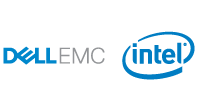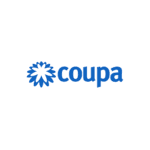Demystifying IT Network Cabling Specifications from 5e to 7A
sponsored by Siemon Company
WHITE PAPER:
This paper discusses the current state of copper-based network cabling standards as defined by ISO and TIA. Learn the difference between category 5e, 6, 6A, 7 and 7A and Class D, E, EA, F and FA.
Posted: 20 Aug 2007 | Published: 01 Aug 2007

|

|
|
Computer Weekly - 22 September 2020: Can Arm stay strong under Nvidia?
sponsored by TechTarget ComputerWeekly.com
EZINE:
In this week's Computer Weekly, we examine the implications of the controversial acquisition of UK chip leader Arm by US rival Nvidia. Black Lives Matter has raised awareness of social inequalities, but is the tech sector becoming more diverse? And we ask if business software can learn from the addictive nature of social apps. Read the issue now.
Posted: 08 Feb 2021 | Published: 21 Sep 2020

|

|
|
CW@50: What was making the news in June
sponsored by TechTarget ComputerWeekly.com
EGUIDE:
The National Museum of Computing has trawled the Computer Weekly archives for another selection of articles highlighting significant articles published in the month of June over the past few decades.
Posted: 08 Feb 2021 | Published: 03 Jun 2016

|

|
|
Dell PowerVault MD3000 1000 Mailbox Local Continuous Replication Microsoft Exchange 2007 Storage Solution
sponsored by DellEMC and Intel®
WHITE PAPER:
This white paper describes a tested and validated storage solution for a 1000 mailbox Exchange Server 2007 environment with Local Continuous Replication (LCR) feature.
Posted: 27 Aug 2008 | Published: 27 Aug 2008

|

|
|
Guide to Bandwidth Expansion
sponsored by Motorola Solutions
WHITE PAPER:
This guide reviews the shift in the dynamics of competitor activity and evolving services which are creating the pressing need for operators to generate more bandwidth.
Posted: 05 Jan 2009 | Published: 23 Dec 2008

|

|
|
Integrating HP Data Protector Software with HP Data Deduplication Solutions
sponsored by HP Inc
WHITE PAPER:
This white paper will discuss HP Data Protector Software which fully supports HP data deduplication technologies allowing you to recover files more quickly while reducing your data management and storage costs.
Posted: 10 Dec 2008 | Published: 10 Dec 2008

|

|
|
Disaster Recovery Solutions from VMware: Transforming Disaster Recovery - VMware Infrastructure for Rapid, Reliable and Cost-Effective Disaster Recovery
sponsored by VMware, Inc.
WHITE PAPER:
VMware Infrastructure is transforming the way disaster recovery is done today and in the future; it changes the disaster recovery paradigm to one that is cost effective, rapid and reliable.
Posted: 20 Oct 2008 | Published: 18 Oct 2008

|

|
|
Increasing Business Performance: Using Virtualization for SAP Applications on IBM System p Servers
sponsored by IBM
WHITE PAPER:
This white paper captures the experiences of six large companies running SAP applications using IBM® System p™ virtualization.
Posted: 17 Jun 2008 | Published: 16 Jun 2010

|

|
|
The Cost and Benefits of On-Demand Vs. On-Premise Procurement Software
sponsored by Coupa
WHITE PAPER:
While there are dozens of procurement software solutions available, there are really only two types offered: "on-premise" procurement software and newer "ondemand" procurement software. This paper outlines an approach to compute and compare them.
Posted: 10 Sep 2008 | Published: 10 Sep 2008

|

|
|
Using Bandwidth More Efficiently with Switched Digital Video
sponsored by Motorola Solutions
WHITE PAPER:
Switched Digital Video (SDV) offers tremendous promise for network operators seeking to more efficiently use bandwidth and deliver highly targeted content to subscribers.
Posted: 05 Jan 2009 | Published: 31 Dec 2008

|

|